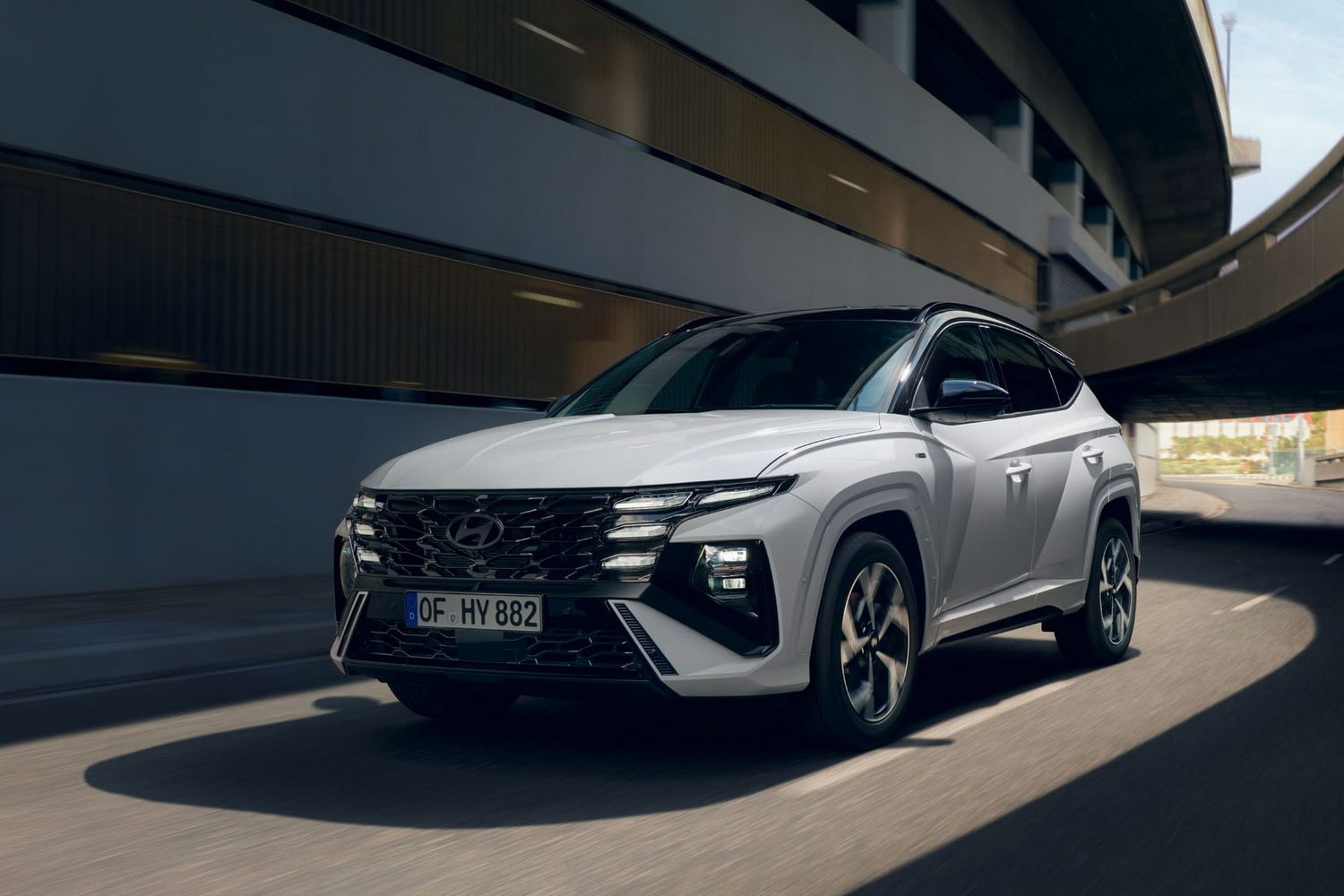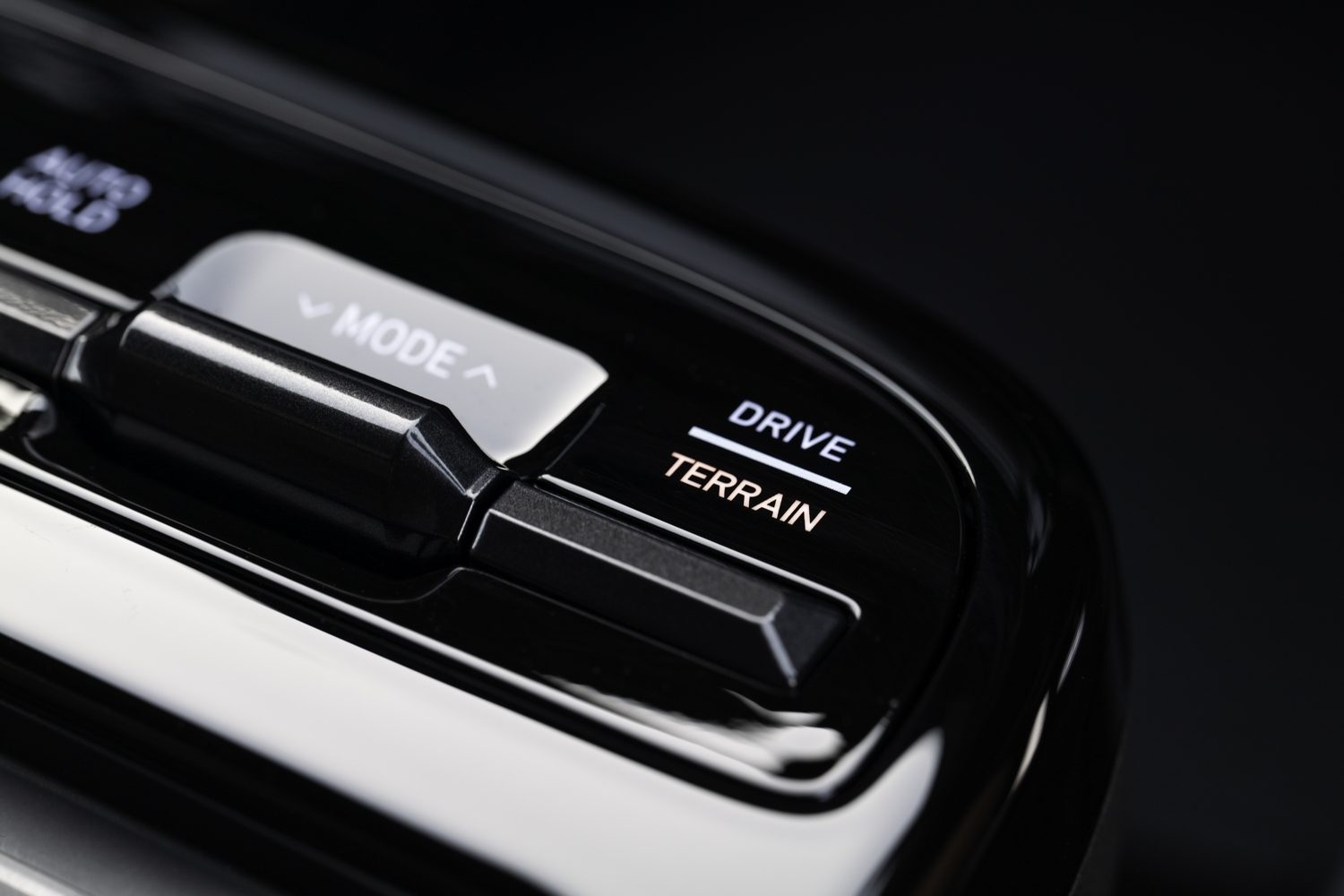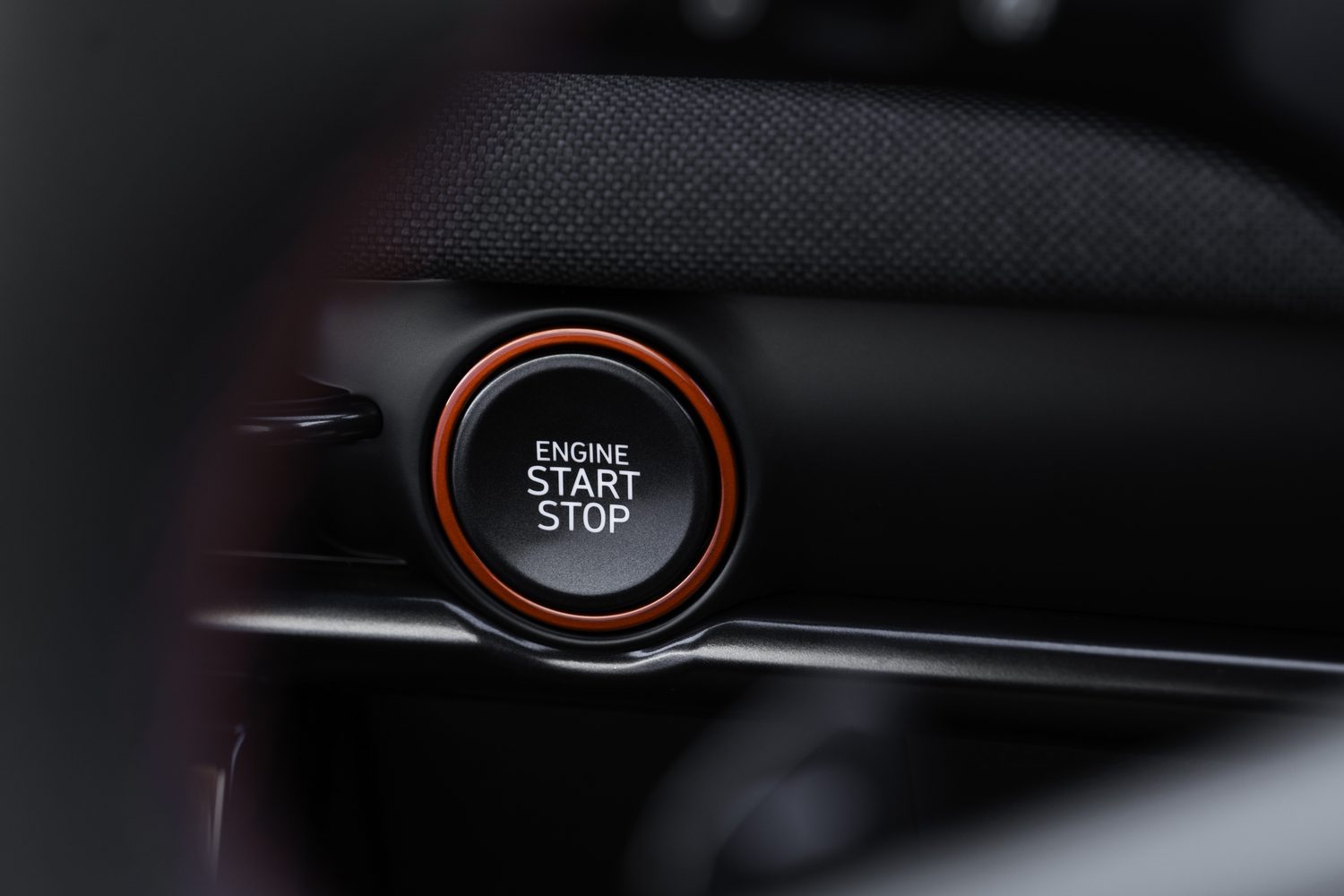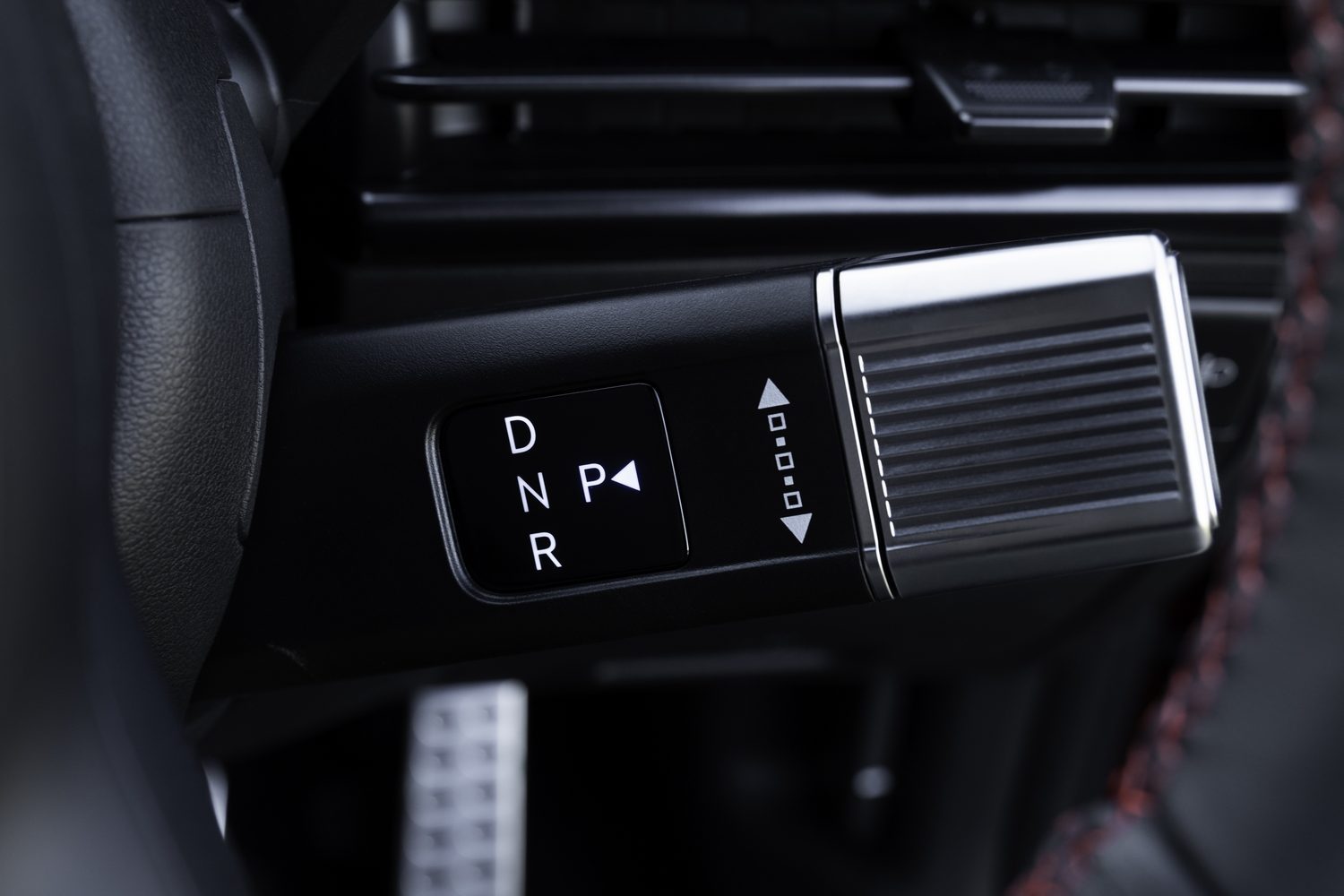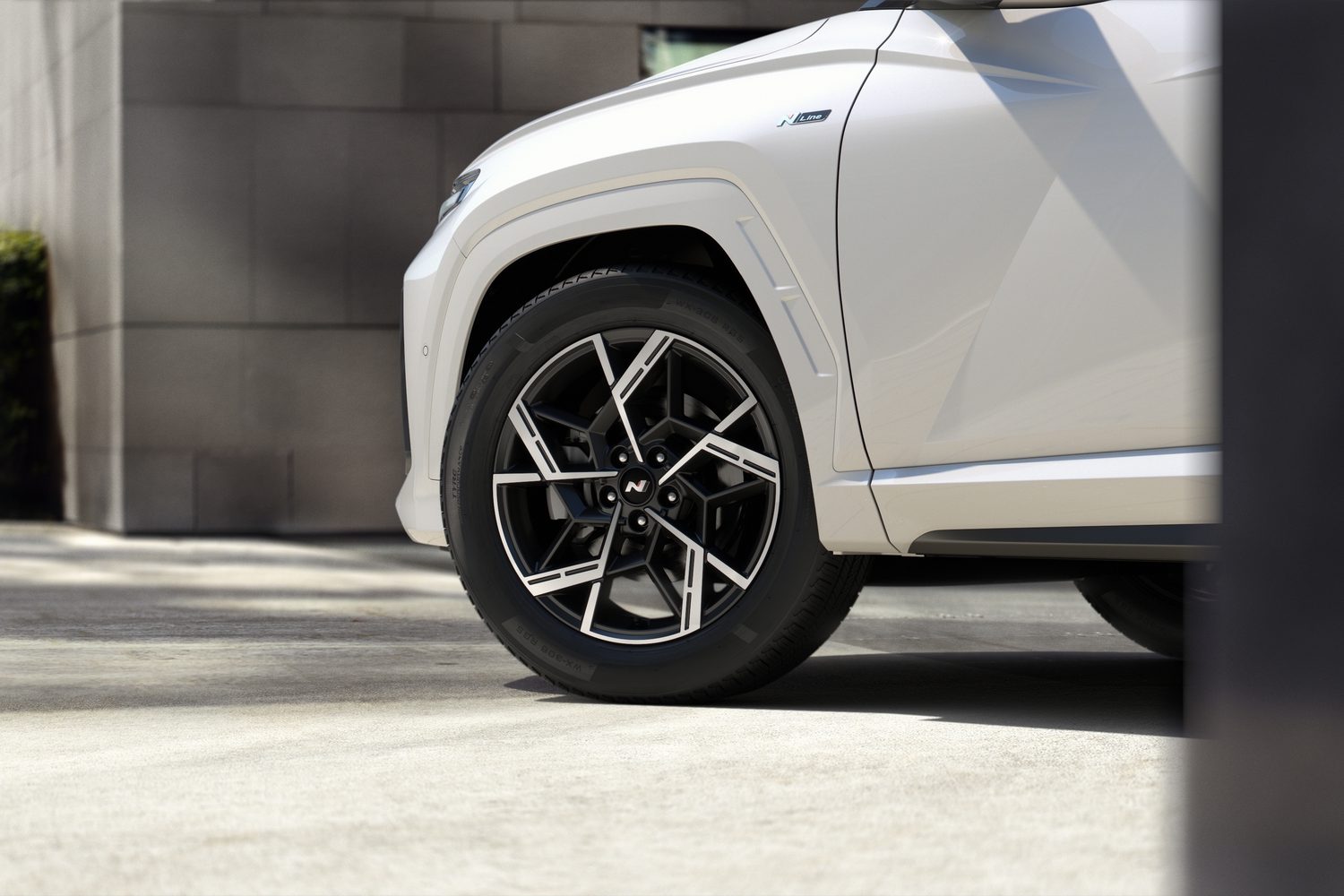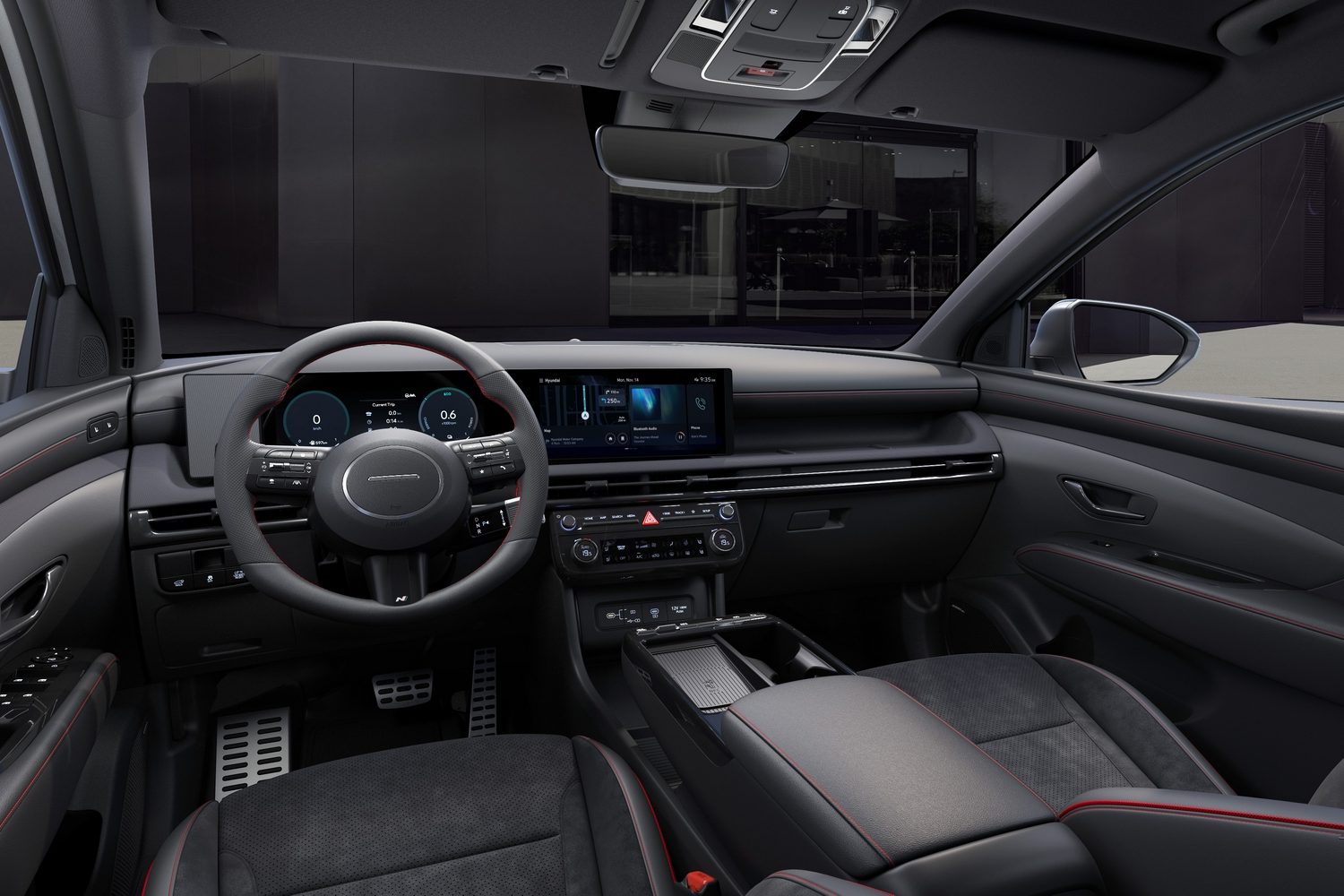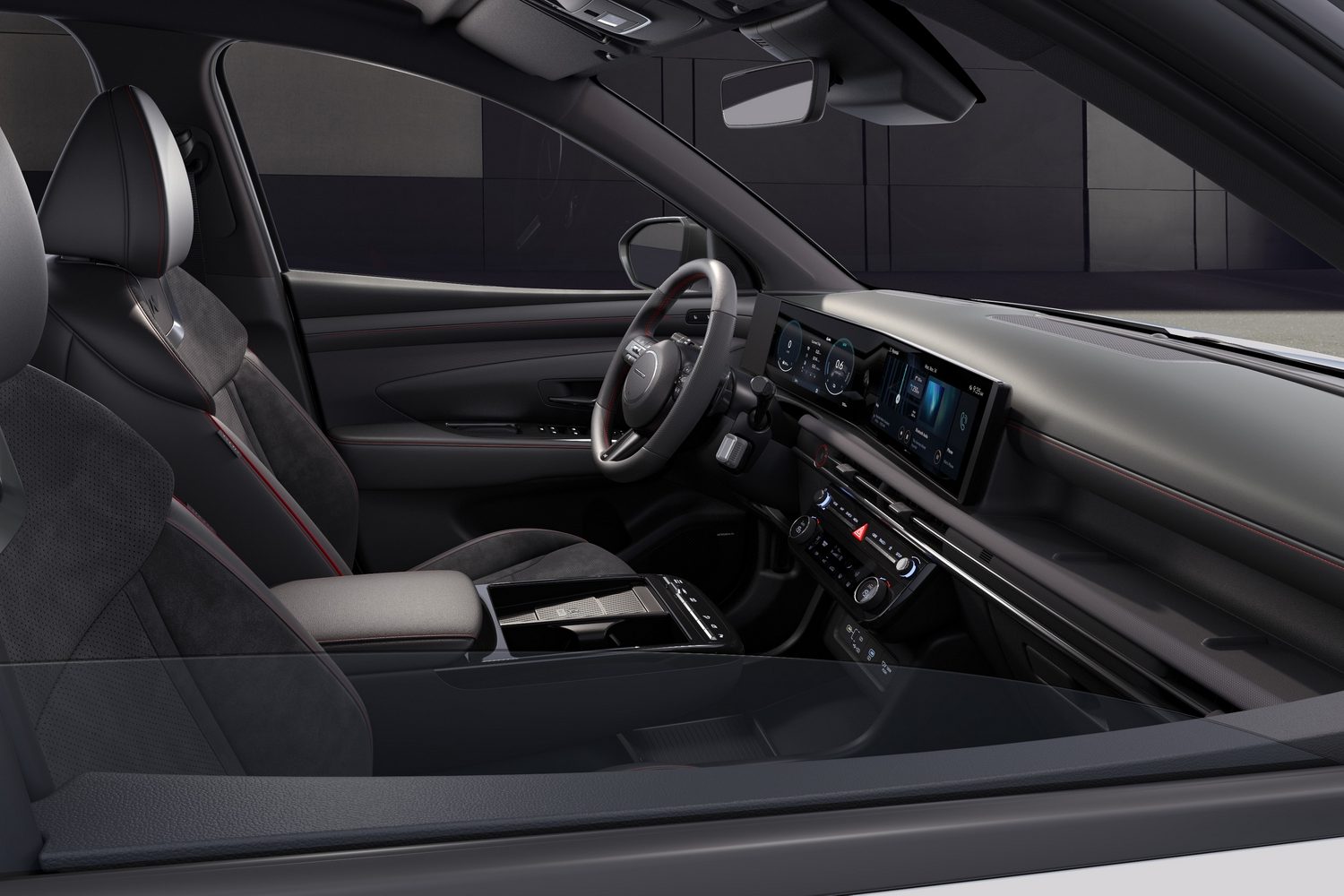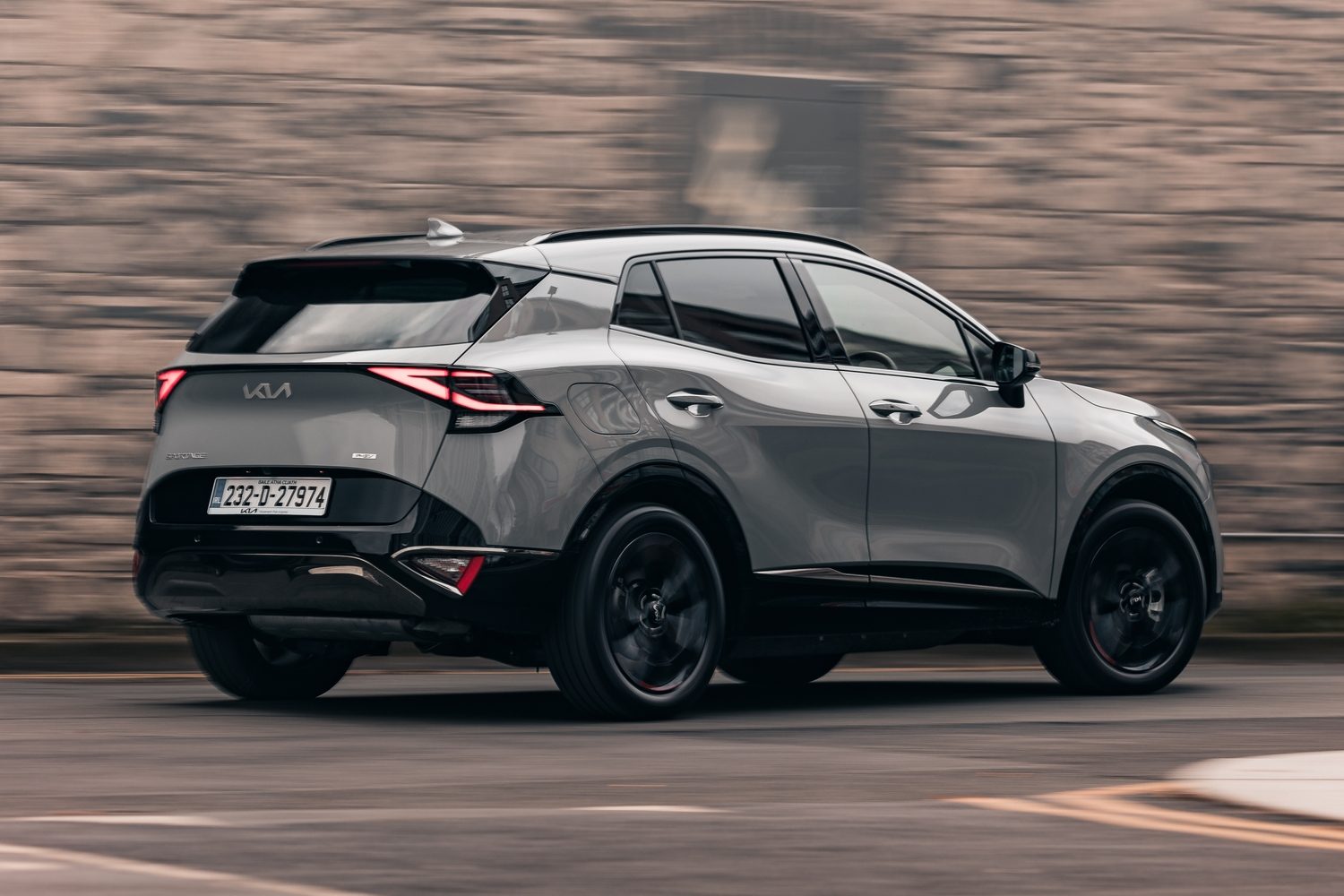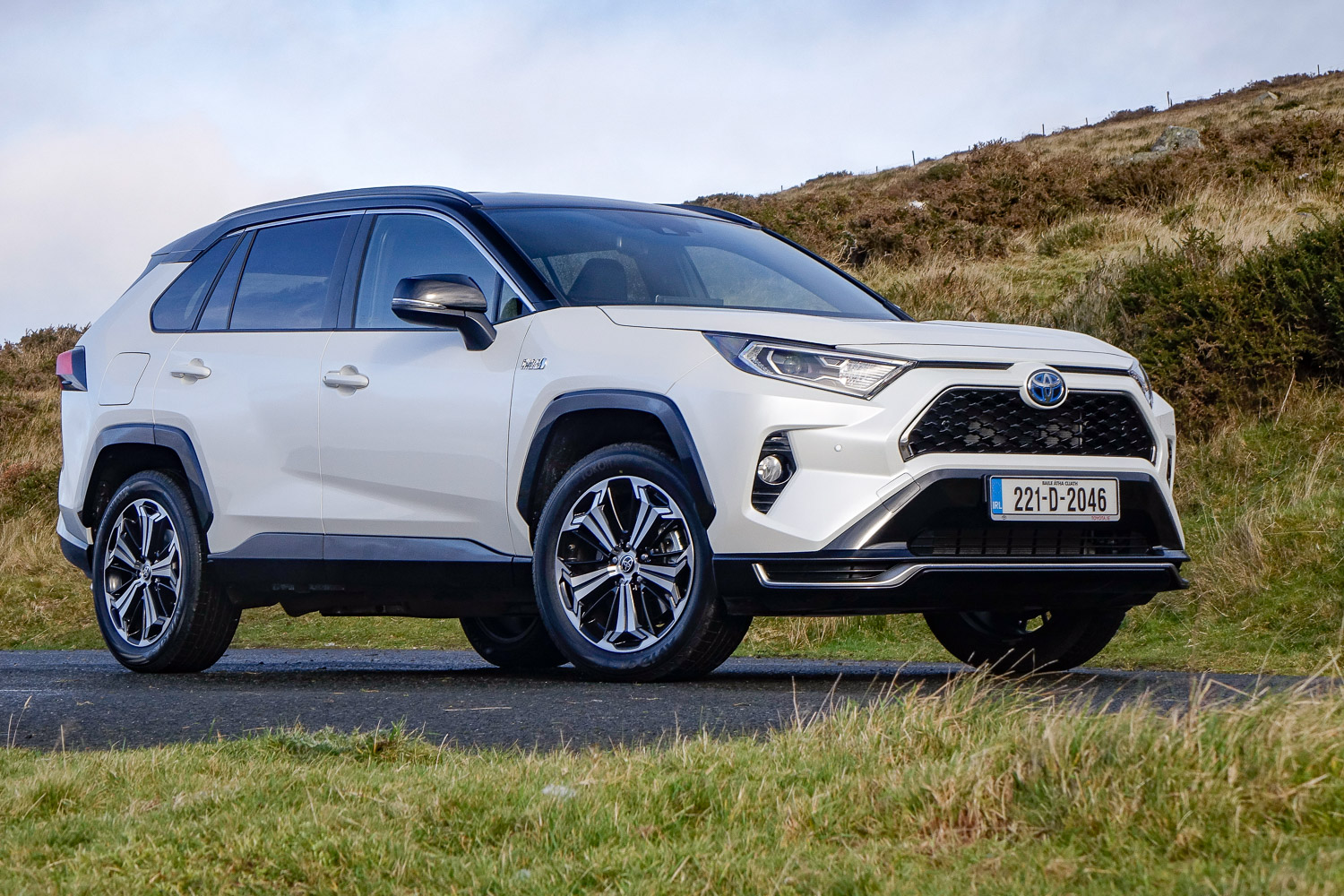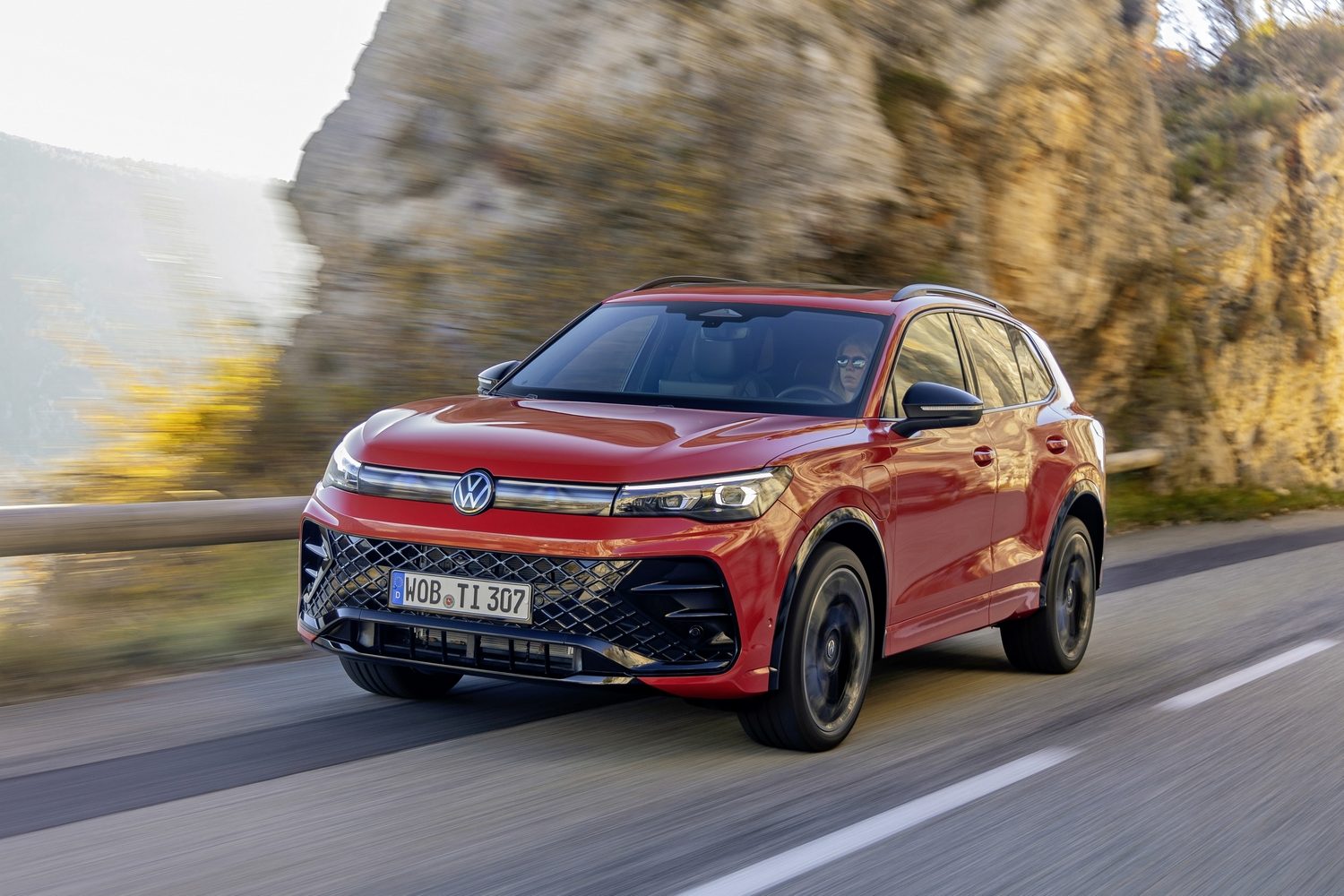Ever since it replaced the Hyundai ix35 almost a decade ago, the Tucson has been a smash hit for Hyundai, rapidly becoming recognised as one of the best family SUVs on the market and Ireland’s best-selling car. And now it has been updated, receiving a slightly revamped design and a new interior as part of its mid-life refresh.
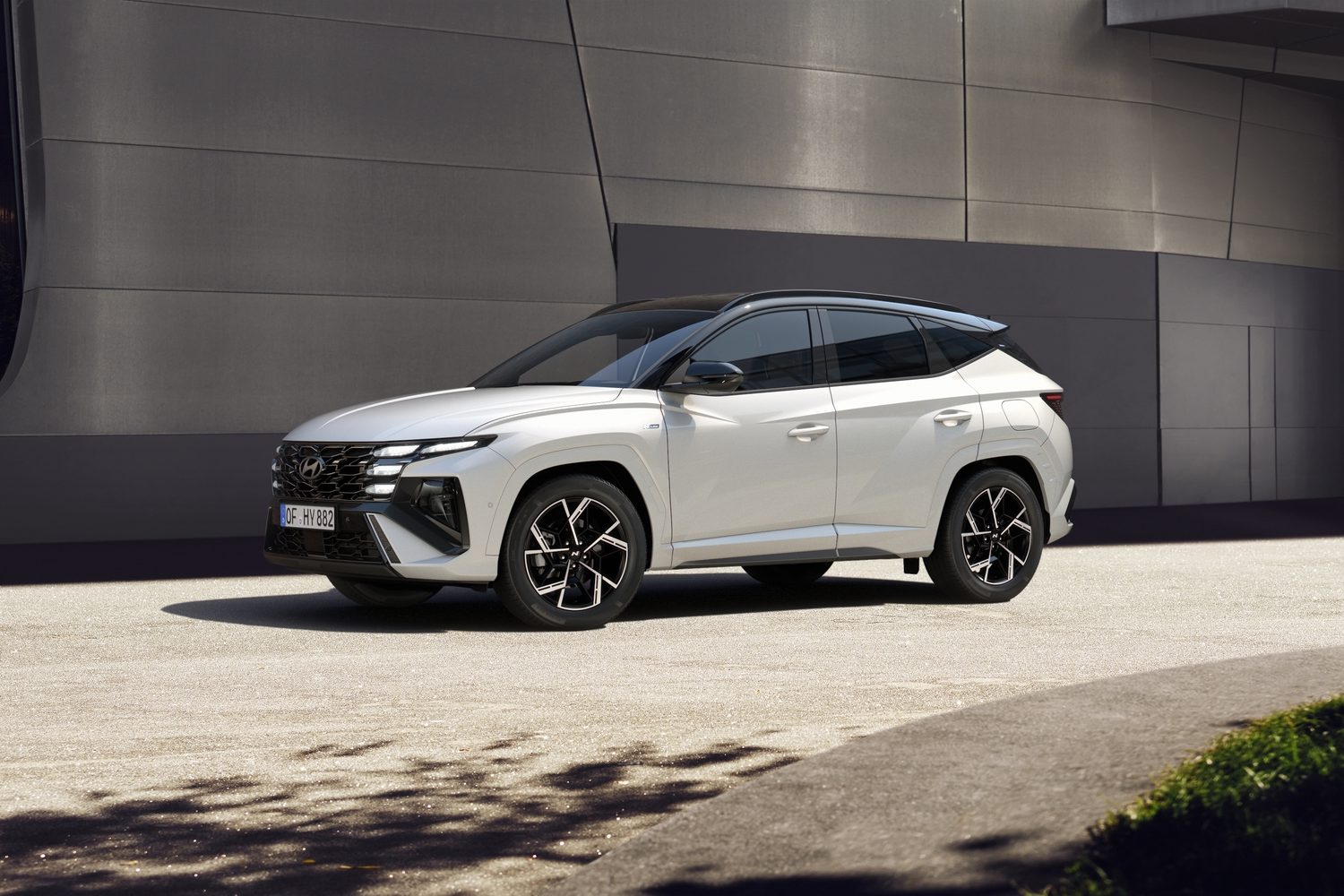
However, with so many new competitors on the market, and more seemingly arriving with every passing week, have the updates been enough to keep this sales sensation at the top of its class? To find out, and to get our first taste of the new-look Tucson, we took the sportily styled N Line plug-in hybrid (PHEV) version for a spin on UK roads.
What does the new Hyundai Tucson look like?
Just by looking at these pictures, you may not immediately notice that Hyundai has revamped its family SUV. The grille, the headlights and the roofline all look much the same as before, and it’s not until you put the new and outgoing models side by side that you notice the changes. New bumpers at the front and rear are designed to accentuate the car’s width, while the grille has been modified very slightly to make it appear more angular.
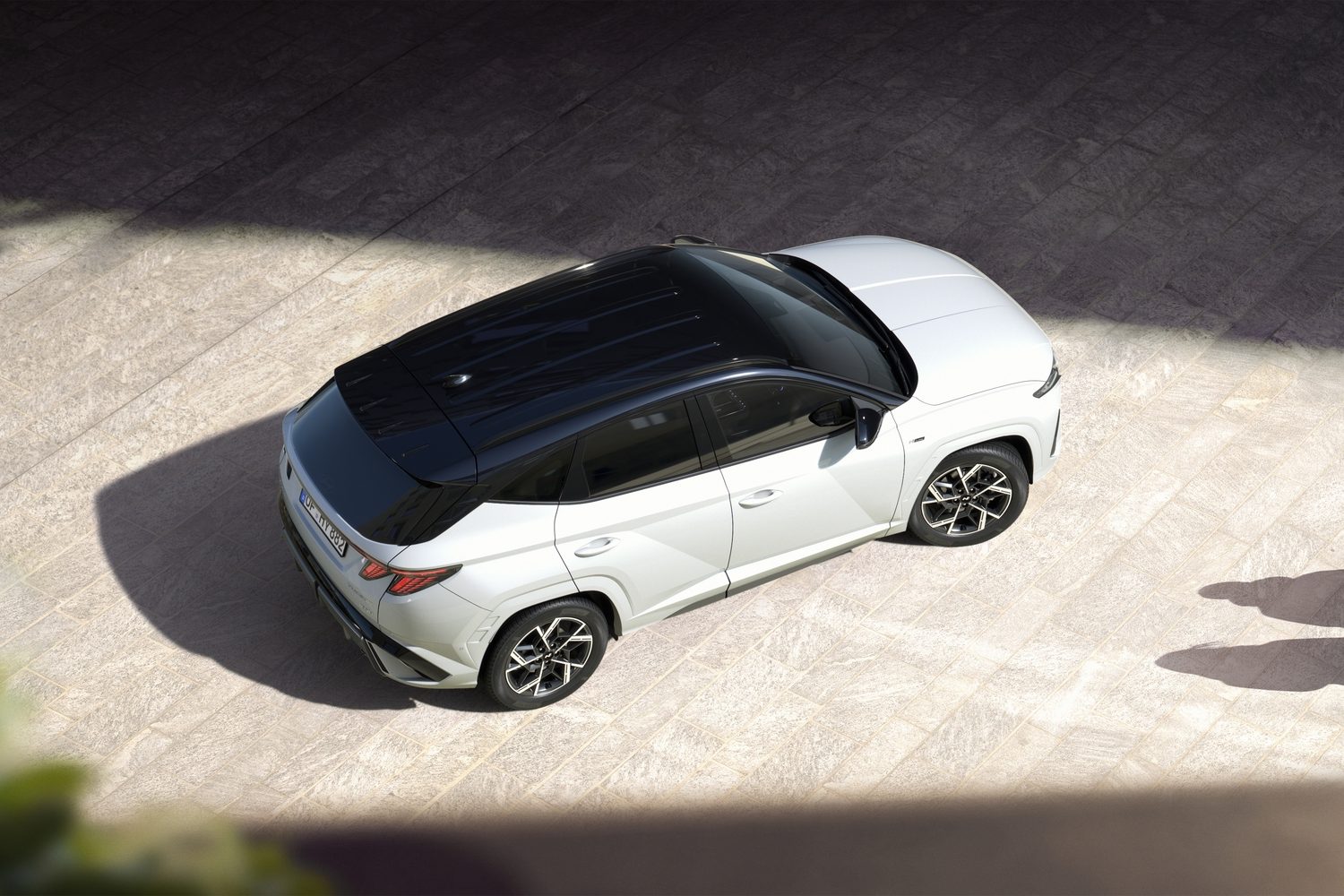
There are redesigned alloy wheels, too, but these are all minor upgrades and are unlikely to encourage too many customers to chop in their old model. That said, the Tucson was already a striking and modern-looking car, so drastic changes were clearly unnecessary to keep the car feeling up to date. The N Line version we drove stands out from the other models in the lineup.
A look inside the Hyundai Tucson
While the Tucson’s exterior design may not have altered all that much, the car’s interior has been modified considerably, with a new dashboard panel fitted. That has seen the cabin brought more into line with the new Hyundai Santa Fe’s interior, with a new digital instrument cluster and touchscreen fitted within the same curved housing that stretches across about half the dashboard.
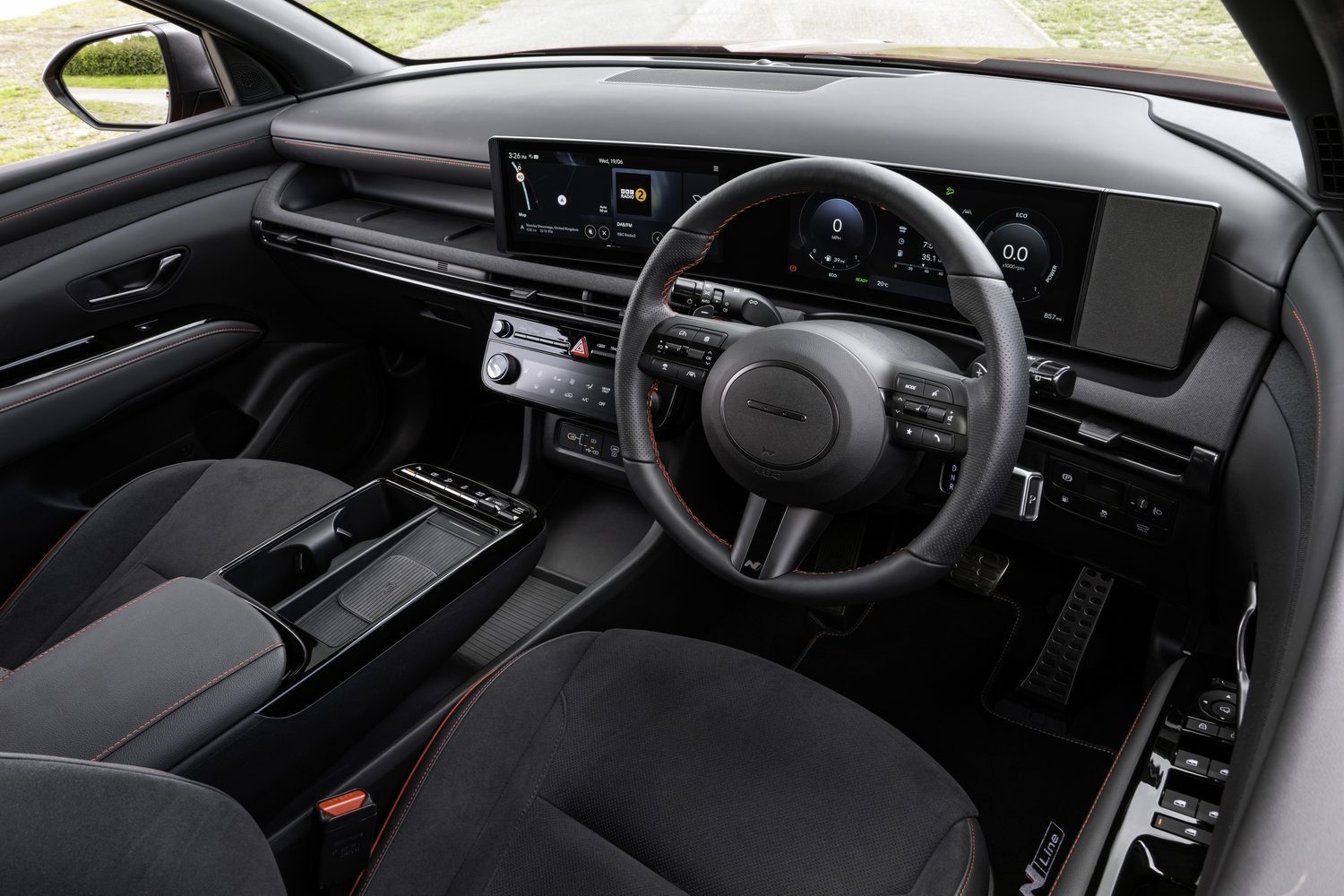
Helpfully, that display sits on a little shelf, against which you can brace your hand for more accurate screen taps while driving, and above a bank of more conventional switchgear that controls the heating and ventilation, as well as a few useful vehicle functions.
The design is considerably more modern than that of the old car, and just as well executed. The materials aren’t always quite as tactile as we’d like - there are some strangely cheap plastics on the steering wheel, for example - but the engineering is difficult to fault. Every button moves exactly as it should and feels well-made and sturdy.
That sturdiness is complemented by the amount of space available in the Tucson’s cabin, which is more than adequate for most families’ needs. Those in the front benefit from plenty of space and seat adjustment, while those in the rear get ample head- and legroom. That means you can carry four adults with ease, and you can pop their luggage in the boot, too. The all-wheel-drive, plug-in hybrid (PHEV) version tested here has slightly less boot space than its siblings, at 558 litres, but that’s still more than you get in a basic Skoda Karoq, for example. Opt for the hybrid or the diesel and that figure will increase.
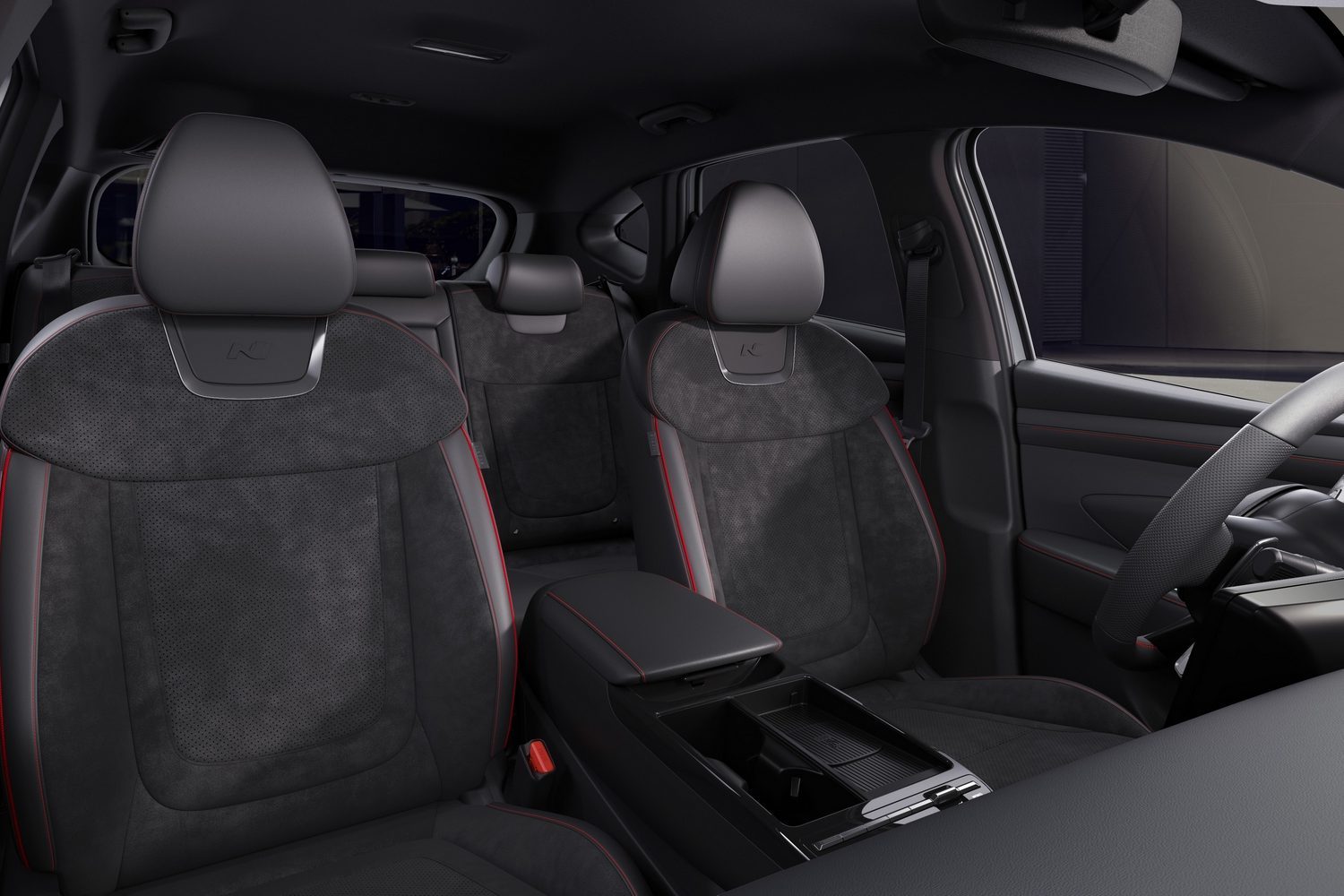
The Hyundai Tucson on-board technology
With the new dashboard design, Hyundai has clearly put more emphasis on its touchscreen technology, but it has done so in the right way. Physical controls still exist for many regularly used features, such as the climate control, and that makes them much easier to use on the move.
That said, the touchscreen is one of the easier systems to use, even if it doesn’t look as flashy as some. Though the design may be a little on the dull side, it is at least clear and easy to read, with logically laid out menus and sensible icon positions. It’s quick to respond, too, and while that ease of navigation won’t necessarily impress many passengers too much, it will make the entire system much easier to live with.
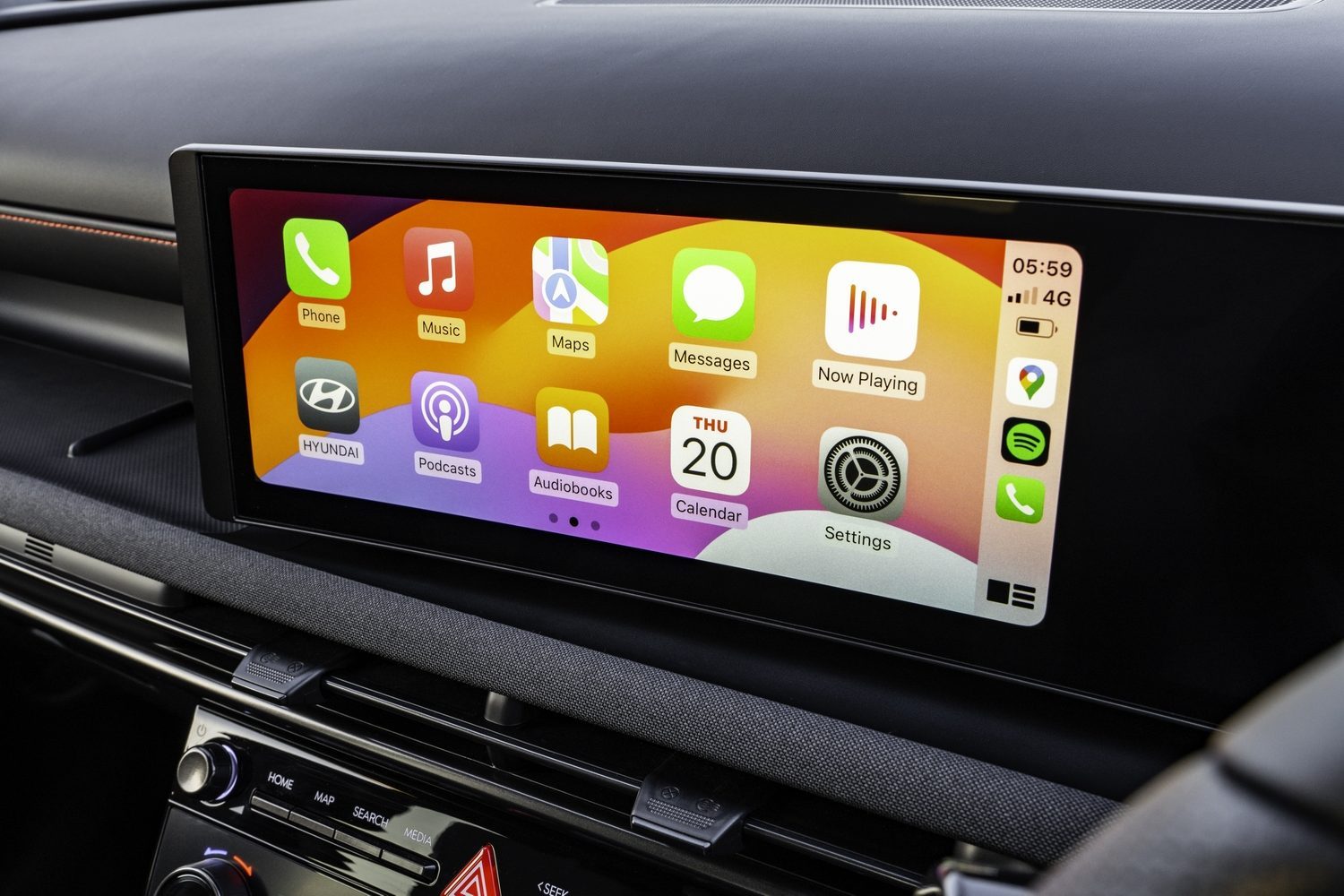
Perhaps the tech highlight of the new Tucson, therefore, is the new digital instrument display. Like the touchscreen, it doesn’t necessarily scream modernity and style, but it puts all the information you need exactly where you need it, and everything is easy to understand. What’s more, cars equipped with blind-spot monitoring get cameras that show you a view down the side of the car whenever you indicate, with the intention of helping you avoid sideswiping other drivers and protecting cyclists.
How efficient is the Hyundai Tucson PHEV?
As before, the Tucson is offered with a choice of three different powertrains, ranging from the basic diesel to the mid-range hybrid (badged HEV) and this, the range-topping plug-in hybrid (PHEV). Both the hybrid and the plug-in hybrid are based around the same 1.6-litre turbocharged petrol engine, but they have different electric motors and batteries that give them quite different power outputs and characteristics.
Where the hybrid has a 44kW electric motor, the plug-in hybrid gets a 67kW motor, which works with the petrol engine to produce a total of 253hp. All that power is split between all four wheels, through the intermediary of a six-speed automatic gearbox, but there’s another piece of the jigsaw.
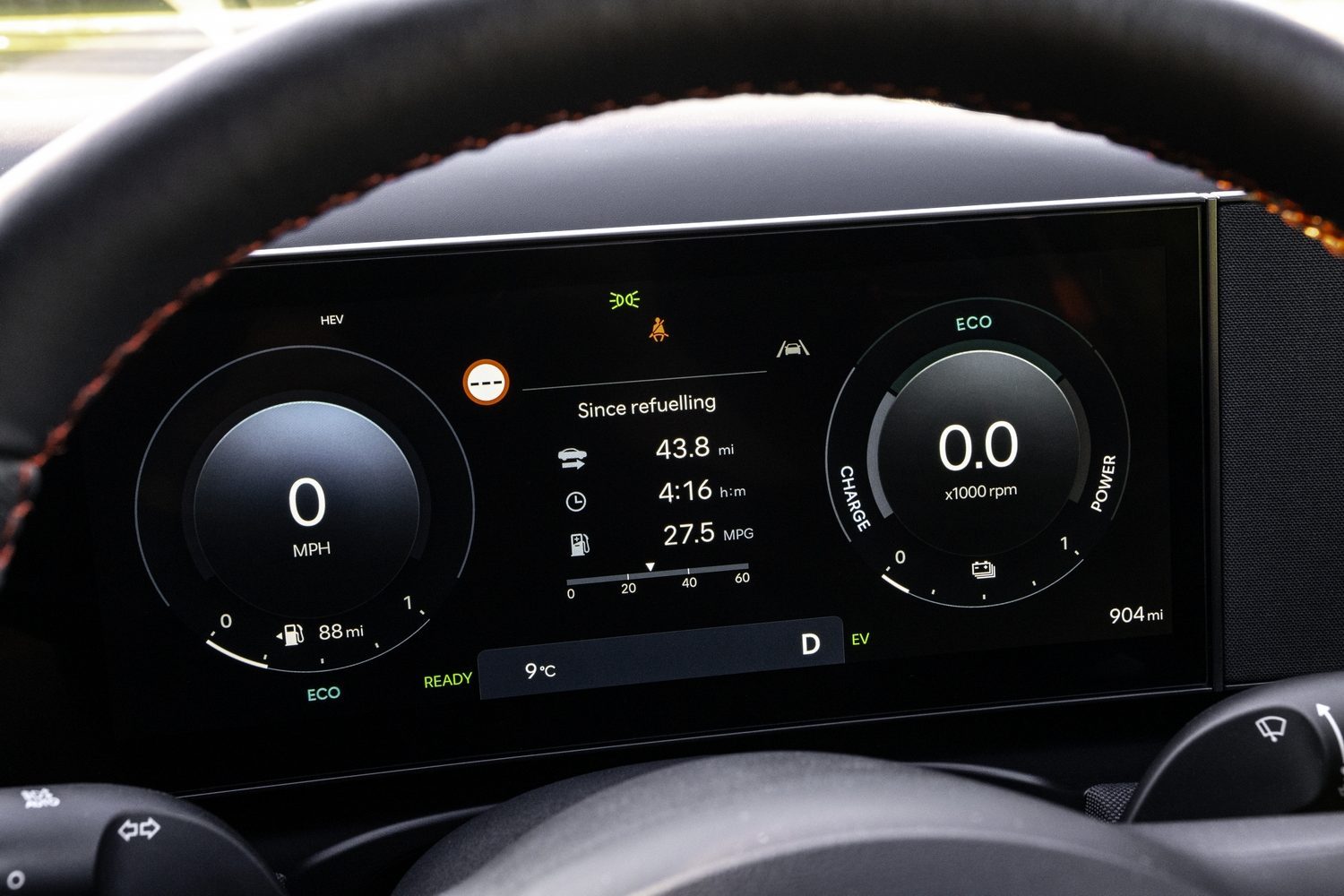
That’s the 13.8kWh battery that gives the Tucson an official all-electric range of just over 60km. That’s just about achievable on the right road and with careful driving, but realistically you’re looking at 50km on electric power alone. That’s nowhere near as much as you’ll get from a Volkswagen Tiguan PHEV, but it’s still useful for those who mostly use the car around town and can charge regularly at home. Do that, and you might manage seriously high average economy figures, even if you have to do the occasional longer shlep on the motorway.
Admittedly, for those long journeys, the diesel (which comes with a manual gearbox and front-wheel drive) is probably a better choice, but the PHEV comes with other advantages. Not least the performance afforded by the 253hp output and the modicum of off-road capability you get from all-wheel drive. And there are tax advantages, too, thanks to the 29g/km emissions, and the refinement you get from running on electric and petrol power.
Driving the Hyundai Tucson PHEV
Even in N Line form, and with all the power afforded by the plug-in hybrid system, the Tucson isn’t really designed to be especially sporty. The steering is light and numb, though it doesn’t quite feel detached, so there’s enough precision without any kind of engagement. That means while the Tucson is easy to place and fairly responsive, it doesn’t exactly encourage you to grab it by the scruff of the neck and tip it into corners.
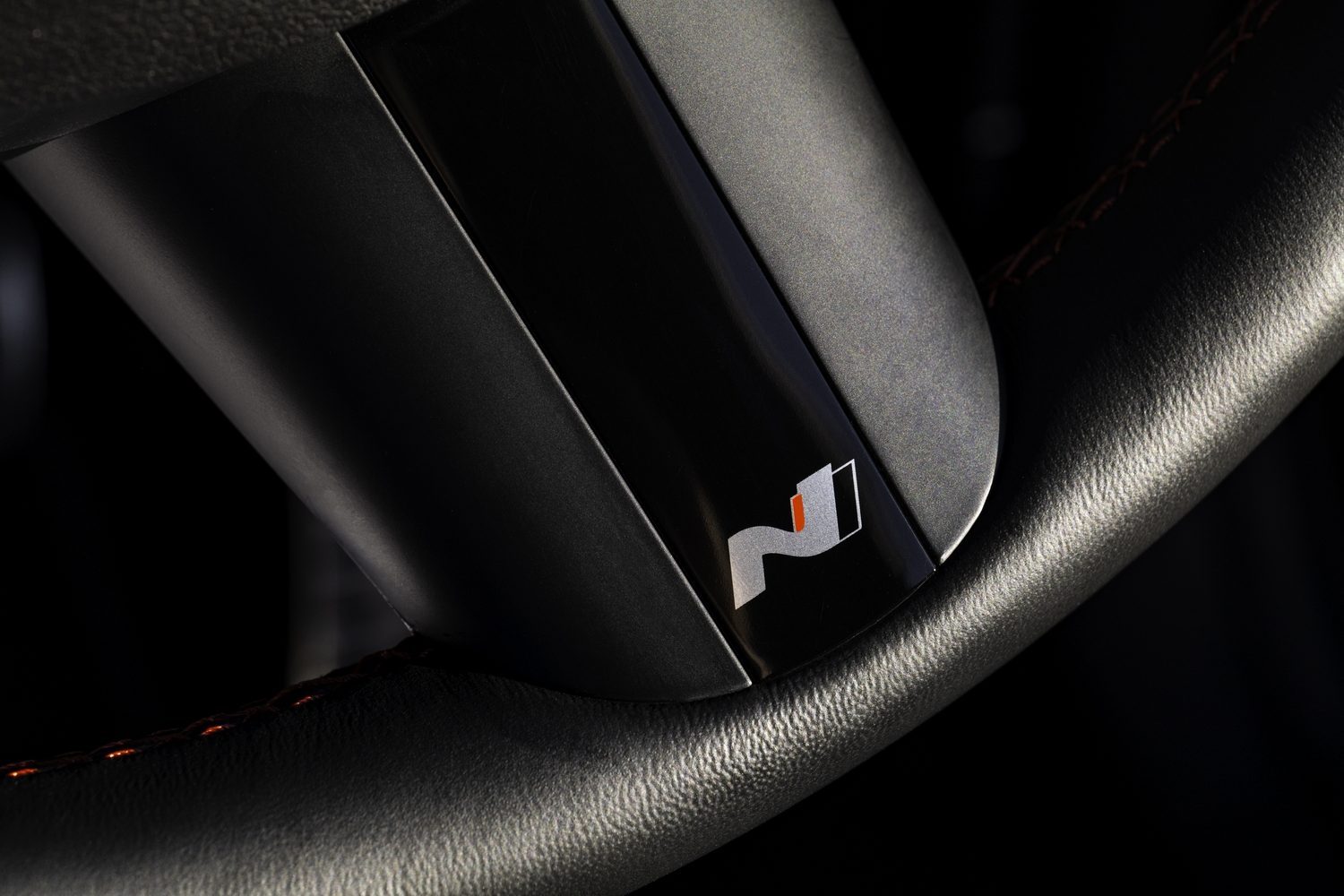
Not that it can’t cope when you do - the body is pretty well contained so there isn’t too much lean in the bends and the grip is more than ample - but it never feels as though it wants you to throw it around. It just gets on with the task in hand.
It’s much better, then, if you drive it in a restrained way, where the suppleness of the suspension can shine through, and the Tucson feels comfortable and refined. The ride isn’t perfect, but it’s fairly good, soaking up the vast majority of bumps with consummate ease and absorbing everything with a kind of unflustered competence. On a motorway or dual carriageway, it’s a really comfortable thing, and even fitted with 19-inch alloys the ride comfort is perfectly acceptable around town.
It’ll even engage in a little light off-roading, although Hyundai would never call it a proper 4x4. But with all-wheel drive and the right tyres surrounding the rims, it’ll deal with far more than any customer is likely to throw at it. It even comes with hill descent control to prevent the car running away from you on slippery slopes, and there are off-road driving modes to manage the car’s power delivery in a way that suits the conditions.
How safe is the Hyundai Tucson?
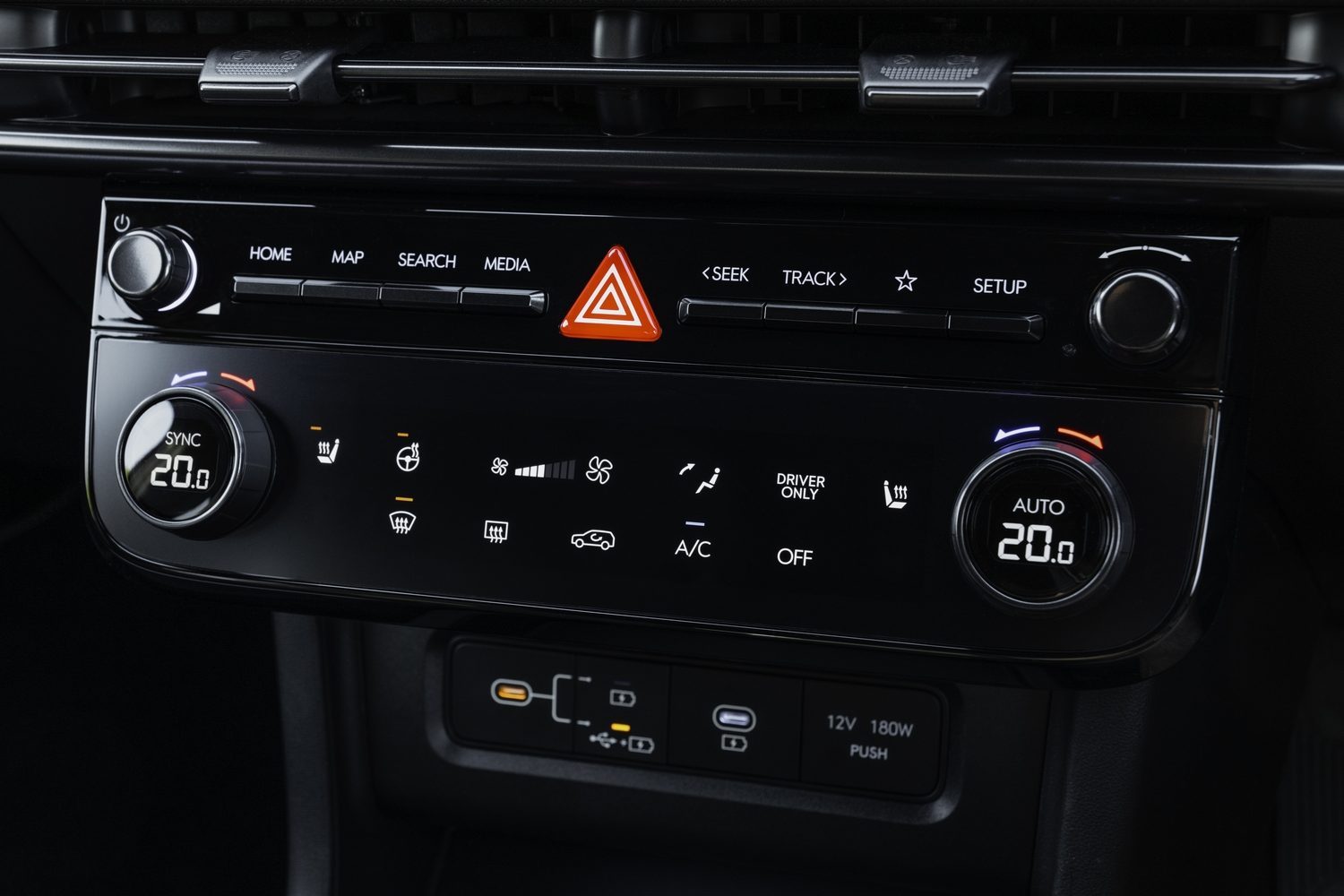
Euro NCAP, the independent body that tests the safety of cars in Europe, has not yet got its hands on the new Tucson, but we’re expecting it to perform well. After all, though the bodywork has changed slightly compared with the outgoing model, the basic structure is the same, so we’d expect another five-star rating.
Not least because the new Tucson comes with so much safety technology. We’ll gloss over the legally mandated speed limit warning tech, which can be a pain, as it is in every new car, but lane-keeping assistance is standard, along with cruise control and forward collision alerting tech. And all but the basic Comfort Plus models come with blind-spot monitoring technology as standard.
How many child seats can you fit in a Hyundai Tucson?
The new Tucson, whether in hybrid or PHEV form, comes with two ISOFIX child seat mounting points on the outer rear seats, which allows you to fit two child seats in easily. For most, that will be more than enough, but some might prefer to look at alternatives such as the Audi Q3, which comes with an ISOFIX mounting point in the front passenger seat as well. It may be possible to squeeze a slim booster in between those, though try it out for size before you commit.
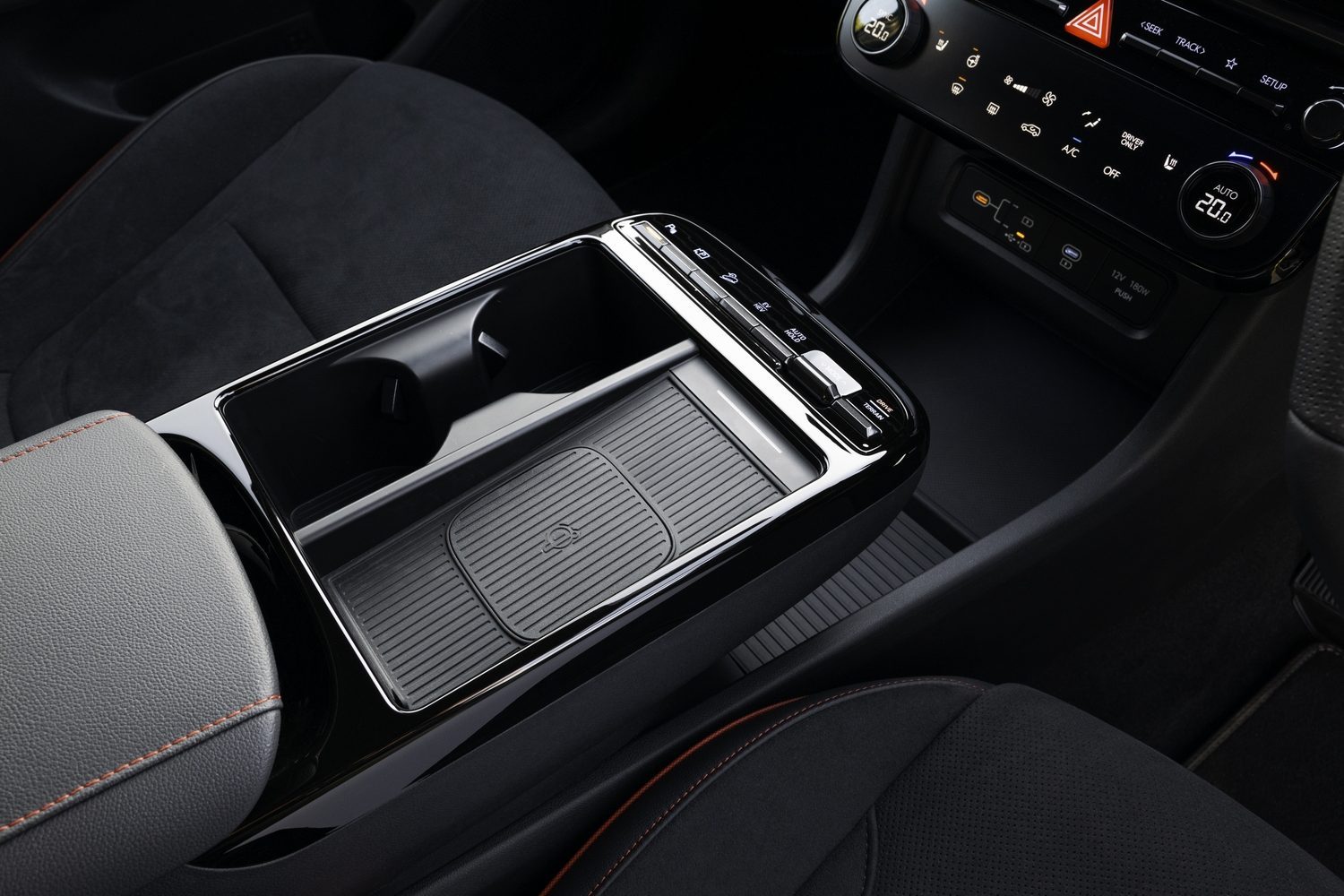
How much does the Hyundai Tucson PHEV cost in Ireland?
The Tucson PHEV models are the most expensive versions of the Tucson available, with prices starting at €45,745, though that’s still less than you’ll pay for a plug-in hybrid Kia Sportage. And the base model is very well equipped, with 17-inch alloy wheels, heated front seats and automatic lights and wipers, not to mention two-zone climate control, a reversing camera and front parking sensors. Navigation is standard, too, as are the wireless Apple CarPlay and Android Auto smartphone integration systems.
The basic Comfort Plus model, then, has everything you need, but more upmarket Executive and Executive Plus versions add goodies such as bigger wheels, wireless phone charging and blind-spot collision avoidance. The N Line we tested, meanwhile, comes in at €51,745 and gets a sportier look thanks to slight changes to the bodywork and model-specific 19-inch alloy wheel designs, plus part-leather upholstery for the N Line sports seats.
The reasons you’d buy a Hyundai Tucson PHEV
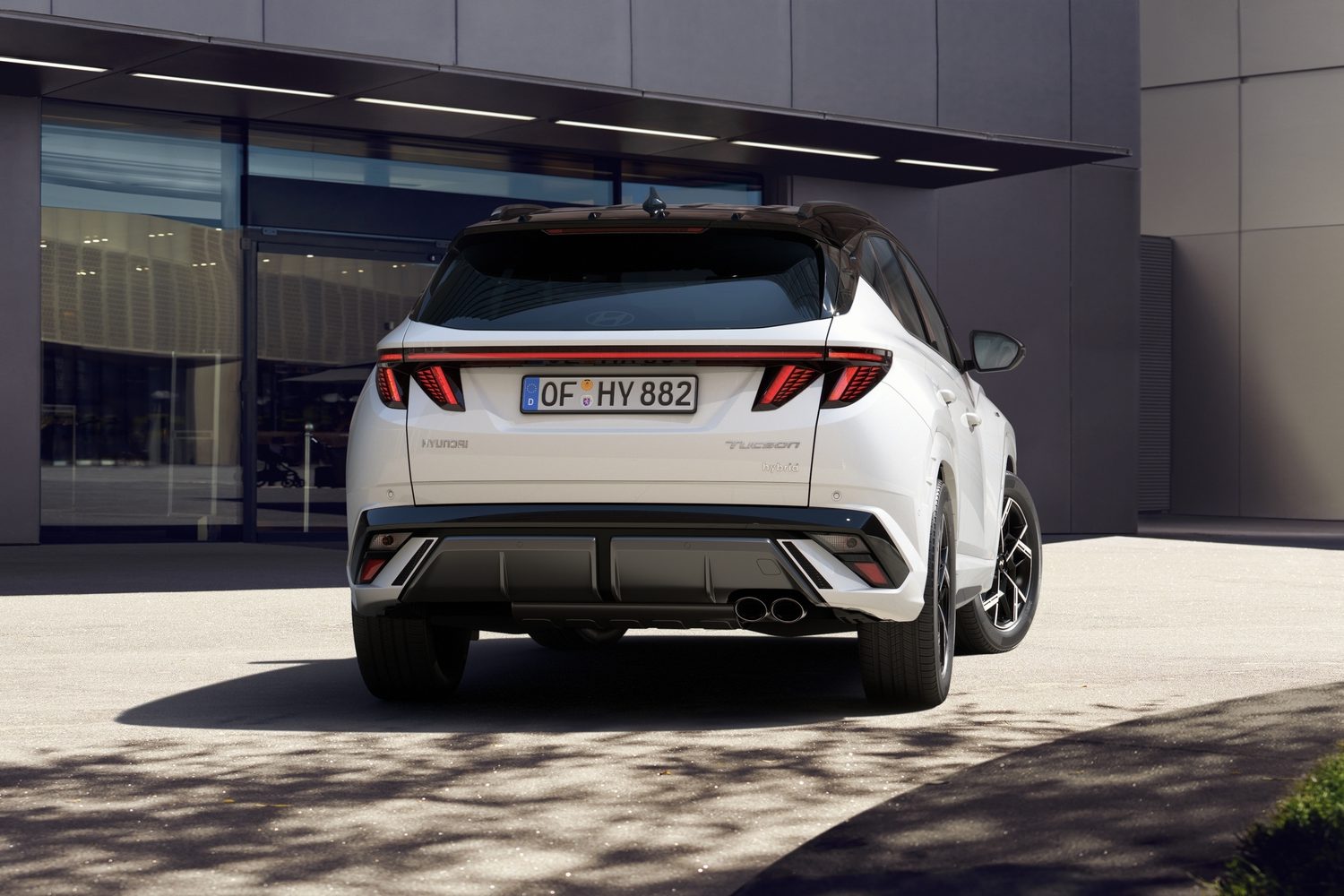
If you’re after a family SUV and the plug-in hybrid system suits your lifestyle, you simply have to consider a Hyundai Tucson. It may not be the most exciting car on the market, but its competence is beyond question, and it feels at home in almost any situation. If you want something that’s going to slot into your life perfectly and be a faithful, dependable servant, then the Tucson will be a difficult car to beat.
Ask us anything about the Hyundai Tucson
If you would like to know more about the Hyundai Tucson PHEV, or any other version of the Tucson, why not head to our Ask Us Anything page? There you’ll find our expert advice service, where you can find out anything you want to know about any car on sale in Ireland completely free of charge. It’s like having your own group of experts just a few clicks away.

